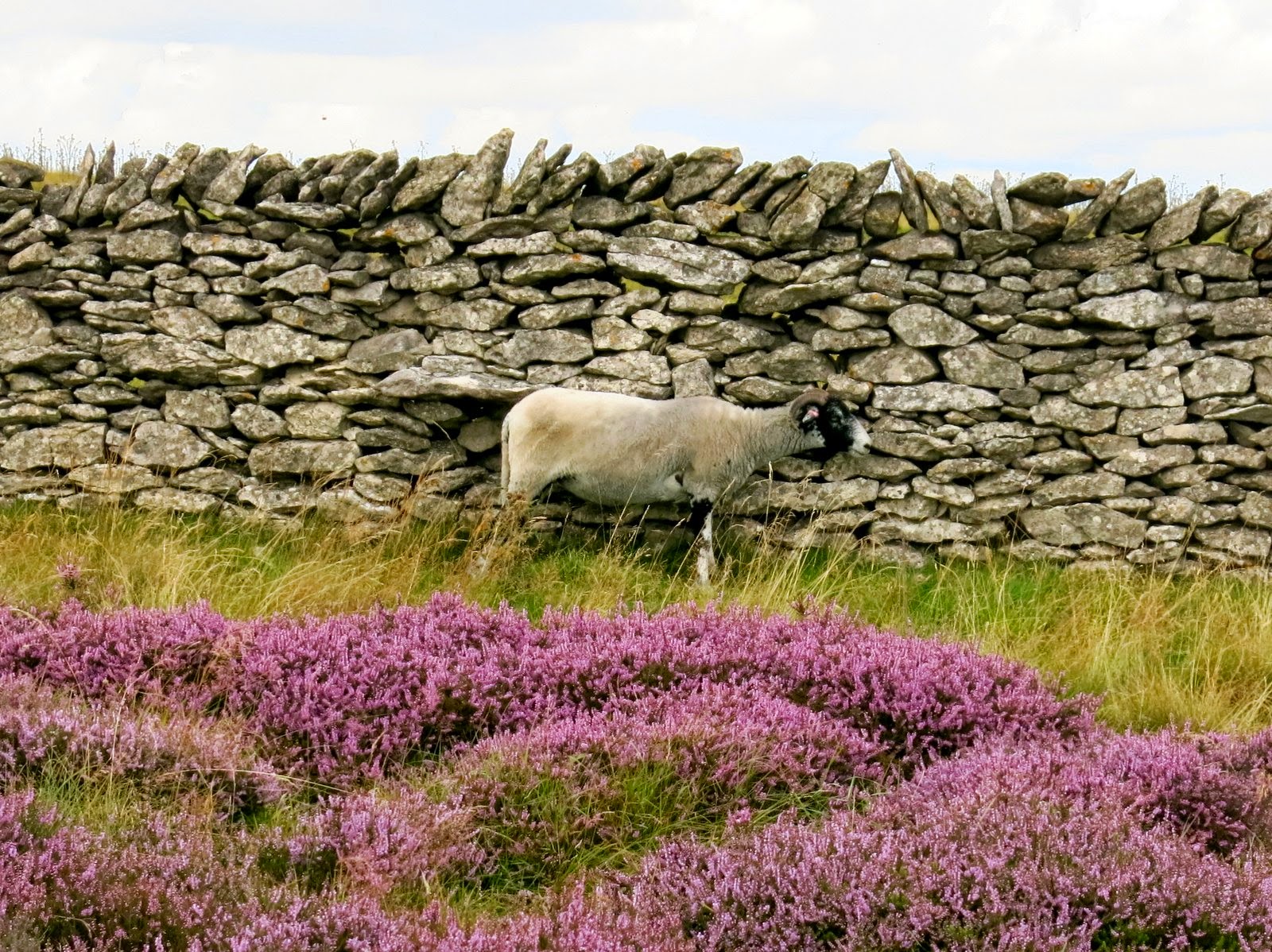Limekiln House and the Drove Road from Kepwick
5.5 miles Cool with grey skies
Tom Scott Burns suggests that Kepwick is
derived from the Scandinavian Kaeppi and Vik, producing Kaeppivik which means 'a
nook in the hills'. In Victorian times it was noted for its lime and
sandstone quarries and a railway ran from Kepwick to kilns on the Yarm
to Thirsk turnpike road. We approached Kepwick from the A19 and intended to park in the church car park as TSB suggests, but there were agricultural vehicles were parked there. Instead we left the car at the roadside further into the village.
 |
| Today's walk from The Walker's Guide to the Hambleton Hills |
|
|
We walked through Kepwick coming
immediately to the gates of Kepwick Hall where we turned left, following
the tarmac road across the remains of the old railway line and then
climbing slowly past French Hill Wood to isolated Nab Farm.
 |
| Bear left here away from Kepwick Hall |
 |
| Normally a small brook, lots of water today |
 |
| 'Take me with you' Friendly collie at Kepwick |
 |
| French Hill Wood to our right and The Nab on the left |
|
|
 |
| Pretty colours at French Hill Wood |
We walked through Nab Farm pausing to look at the cattle who are all in sheds for winter. The path keeps to the outskirts of the buildings but was running with deep, thin, mud which we squelched through, admiring the restraint pen with its old clippers on our left.
 |
| Restrain pen at Nab Farm |
Leaving Nab Farm behind, our path improved slightly and we looked down across the valley, over Bridge Beck towards Whitestone Scar and Kepwick Moor on the horizon. We could see our path all the way to the high moor.
 |
| Leaving Nab Farm and descending to Bridge Beck |
We came to the ruins of an old lime kiln and our path climbed quickly away from it, following a nice green path alongside a dry stone wall. We noticed that the wall was providing a break from the brisk wind so we decided to hunker down behind it to enjoy our coffee and scones.
 |
| Old lime kiln |
 |
| Lime kiln chimney |
 |
| Looking across at Kepwick Quarry |
 |
| Preparing our picnic spot |
We sat and watched a kestrel hovering for nearly ten minutes as we ate our scones. Across the heather a grouse moved slowly closer as did a couple of sheep farther down the path, no doubt all drawn by curiosity and the sight of our scones.
 |
| We are watched as we enjoy our break |
 |
| Another ten minutes and they would have been sitting with us |
Before they could join us we set off again, briskly uphill, to pass through a gate and join the old drovers' road. TSB says that at this point we can see the remains of Limekiln House but today all that can be seen is a few stony outcrops and, in the middle of them, a cross with the words 'Bert 7.6.05 RIP'. Presumably a memorial and not Bert's grave.
 |
| The Old Drovers' Road |
We turned right and walked along the old drovers' road, pausing occasionally to admire some of the many signs that the authorities have seen fit to erect along this short stretch.
 |
| Cleveland Way Sign |
 |
| Is this sign really necessary? |
 |
| A plethora of signs |
We followed the drovers' road for nearly two miles, until we reached the remains of Steeple Cross. TSB tells us that Steeple Cross was
referred to as Stepingecross in documents dated 1290 and was probably
derived from the old English 'steapinga' - 'dweller on the slope', hence
'crossroads of the hill-dwellers'. All round this area are Bronze Age
earthworks. We turned right here, into a forestry plantation and began a slow descent along a very wet track which ended at the top of Gallow Hill. Here the path had been blocked by a fence which is easily climbed, to continue steeply down. This area is known as Black Hill and there was a nice view across to Kepwick Hall below us.
 |
| Along the drovers' road towards the forestry plantation |
 |
| The remains of Steeple Cross |
 |
| Turn right through the gate |
 |
| A choice of paths, we took the upper one |
 |
| The path is blocked by a fence which must be crossed |
 |
| Kepwick Hall below Black Hill |
Our path became a sunken hollow as it
crossed the flat plain of Pen Hill, then as we started to descend Atlay
Bank rhododendrons grew thickly on either side for several hundred
yards until the track levels into a field.
 |
| Slippery path downhill |
 |
| We have to divert into the woods! |
 |
| Horse jump built into a stone wall |
 |
| Down Pen Hill |
 |
| Atlay Bank |
 |
| Hollow Lane down Atlay Bank |
Here we saw an old stone shed with water pipes inside it. TSB explains that in 1873 the Warner family erected Kepwick Hall and made extensive improvements to the estate including the construction of two reservoirs on the moors above, one to supply the house with water and the other for the gardens and terraces. This building is obviously from that period.
 |
| Clive approaches the old water shed |
 |
| Inside the shed |
We soon reached the road and turned left to walk through Kepwick, past the church which was locked and unwelcoming as on previous visits, and back to our car.
 |
| Kepwick Church |
 |
| Kepwick |




























































